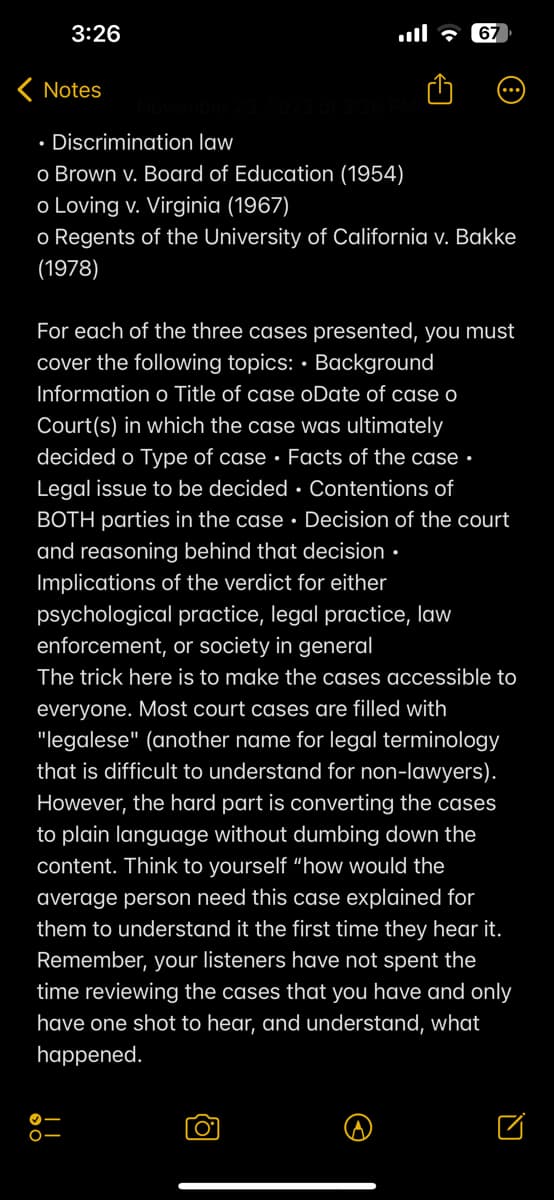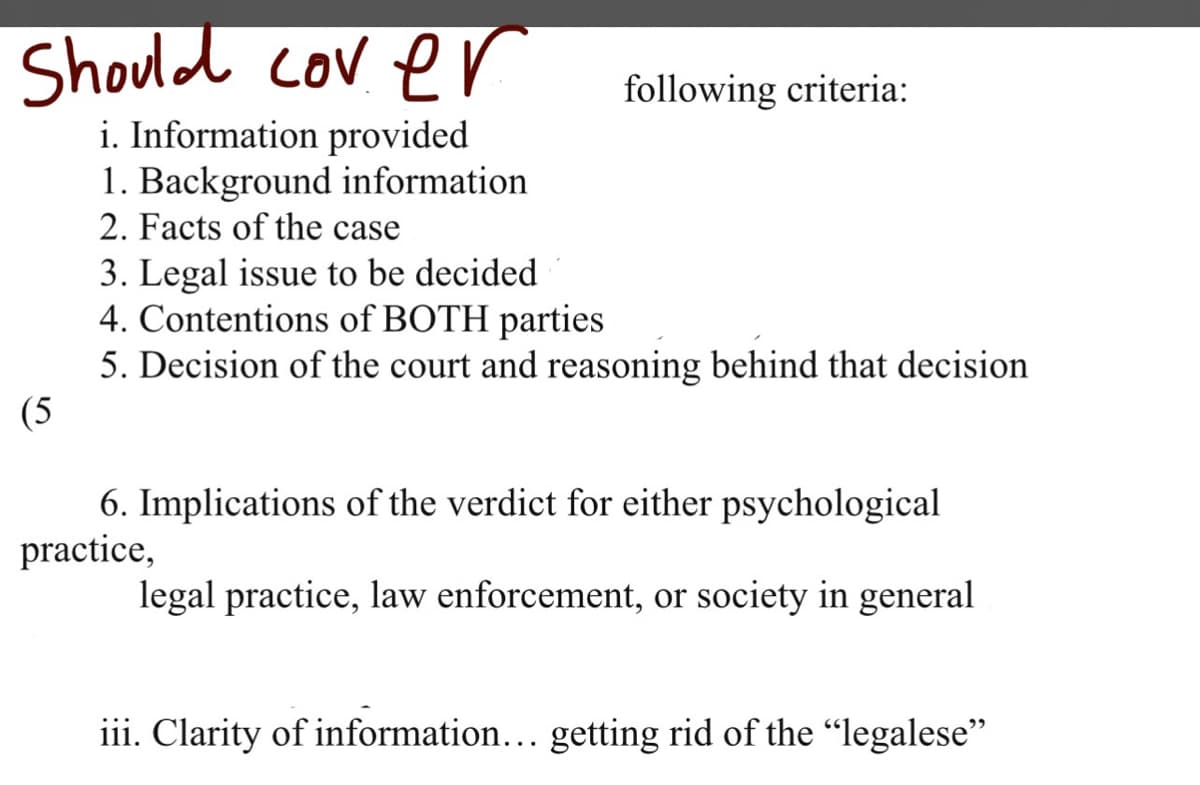• Discrimination law o Brown v. Board of Education (1954) o Loving v. Virginia (1967) o Regents of the University of California v. Bakke (1978) For each of the three cases presented, you must cover the following topics: • Background Information o Title of case oDate of case o Court(s) in which the case was ultimately decided o Type of case Facts of the case • Legal issue to be decided Contentions of BOTH parties in the case. Decision of the court and reasoning behind that decision. Implications of the verdict for either psychological practice, legal practice, law enforcement, or society in general The trick here is to make the cases accessible to everyone. Most court cases are filled with "legalese" (another name for legal terminology that is difficult to understand for non-lawyers). However, the hard part is converting the cases to plain language without dumbing down the content. Think to yourself "how would the average person need this case explained for them to understand it the first time they hear it. Remember, your listeners have not spent the time reviewing the cases that you have and only have one shot to hear, and understand, what happened.
• Discrimination law o Brown v. Board of Education (1954) o Loving v. Virginia (1967) o Regents of the University of California v. Bakke (1978) For each of the three cases presented, you must cover the following topics: • Background Information o Title of case oDate of case o Court(s) in which the case was ultimately decided o Type of case Facts of the case • Legal issue to be decided Contentions of BOTH parties in the case. Decision of the court and reasoning behind that decision. Implications of the verdict for either psychological practice, legal practice, law enforcement, or society in general The trick here is to make the cases accessible to everyone. Most court cases are filled with "legalese" (another name for legal terminology that is difficult to understand for non-lawyers). However, the hard part is converting the cases to plain language without dumbing down the content. Think to yourself "how would the average person need this case explained for them to understand it the first time they hear it. Remember, your listeners have not spent the time reviewing the cases that you have and only have one shot to hear, and understand, what happened.
Related questions
Question

Transcribed Image Text:3:26
< Notes
, 2023 at 3:26 PM
• Discrimination law
o Brown v. Board of Education (1954)
o Loving v. Virginia (1967)
o Regents of the University of California v. Bakke
(1978)
O-
67
For each of the three cases presented, you must
cover the following topics: Background
Information o Title of case oDate of case o
Court(s) in which the case was ultimately
decided o Type of case Facts of the case.
Legal issue to be decided Contentions of
BOTH parties in the case. Decision of the court
and reasoning behind that decision.
Implications of the verdict for either
psychological practice, legal practice, law
enforcement, or society in general
The trick here is to make the cases accessible to
everyone. Most court cases are filled with
"legalese" (another name for legal terminology
that is difficult to understand for non-lawyers).
However, the hard part is converting the cases
to plain language without dumbing down the
content. Think to yourself "how would the
average person need this case explained for
them to understand it the first time they hear it.
Remember, your listeners have not spent the
time reviewing the cases that you have and only
have one shot to hear, and understand, what
happened.
O

Transcribed Image Text:Should cover
i. Information provided
1. Background information
2. Facts of the case
following criteria:
3. Legal issue to be decided
4. Contentions of BOTH parties
5. Decision of the court and reasoning behind that decision
(5
6. Implications of the verdict for either psychological
practice,
legal practice, law enforcement, or society in general
iii. Clarity of information... getting rid of the "legalese"
Expert Solution
This question has been solved!
Explore an expertly crafted, step-by-step solution for a thorough understanding of key concepts.
Step by step
Solved in 5 steps
